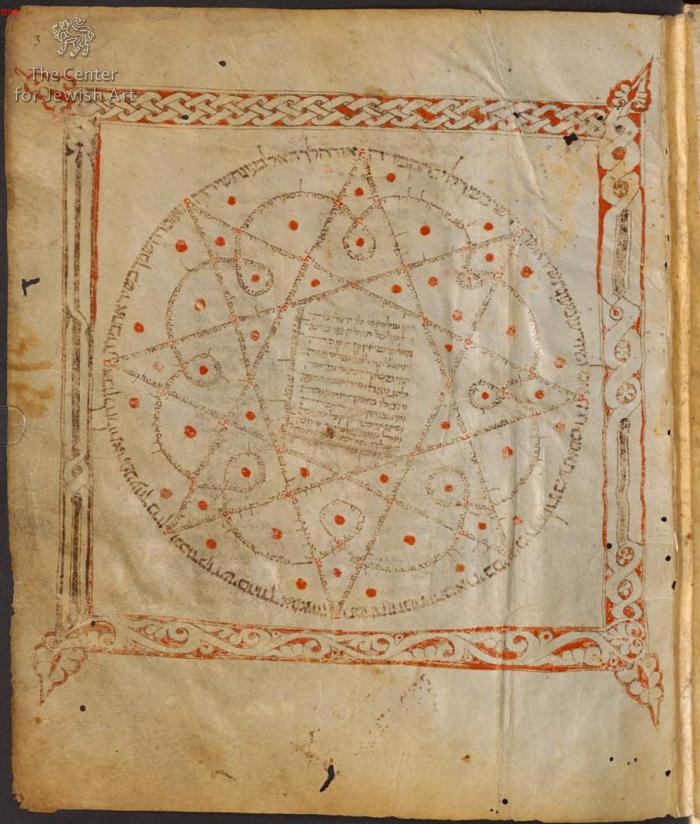Img. ID: 194291

Fol. 3-3v: Second parchment flyleaf from the mutilated manuscript of c.1400:
Fol. 3: Full-page decoration of a square panel enclosing a rosette within a circle outlined in micrography of the piyyut by Yehiel ben Harosh in brown and red ink. This graphic form was originally conceived by the poet, who named it עוגת שירה (Poetical Circle). The poem consists of three sections. The first one beginning with אודה לך האל (Thank you Lord) is written in square script and corresponds to the outer circle of the carpet page; the main section of the poem יהלל פי לאל (I praise God), is called הערוגה (the flower-bed) and corresponds to the form of the rosette written in micrography within the circle. This part also contains the name of the poet in an acrostic, יחיאל הקטן ברבי אשר בן אשר חזק אמן סלה תם. The last section of the piyyut opens with the instruction ואלה היו החרוזים הנתונים למטה כתובים באמצעותם, which means that the verses of this section should be written at the centre of the composition (באמצעותם). Indeed, the verses are written at the centre of the rosette in square script. The panel is framed with a braid motif and acanthus scrolls in spared-ground technique, and palmettes extend from each corner.
Fol. 3v: The page which was originally blank contains another copy of the above piyyut by Yehiel ben Harosh, written in a semi-cursive Sephardi hand. The main section of the piyyut is written in two columns.
It starts with a long line at the top of the page, and ends at the left margin.
The second rhymed poem of Yehiel ben Harosh is written in the form of a circle enclosing a rosette in micrography (fig. 3). This graphic form was originally conceived by the poet who named it "Poetical Circle" (עוגת שירה). The poem reveals in acrostic the name of the poet Yehiel ben Asher (or ben Harosh).
R. Yehiel ben Harosh was the great-grandson of the famous Talmudist HaRoSH (Rabi Asher ben Yehiel, Ashkenaz c.1250 -Toledo1328). Our Yehiel was a great theologian, judge (dayyan) and poet inToledoduring the 14th-15th century, for his first poem is dated 1390. He also was a witness of the pogrom of 1391 גזרות קנ"א)) inToledo, in which another great-grandson of HaRoSH, R.Yehudah ben Asher (for whom ibn Merwas copied a Bible in 1334) was killed (Zacuto 1875:225; David, 1986:53-55). As Prof. David pointed out, this poem is copied in several manuscripts but only the Munich Sephardi Bible includes the form of the circle (David 1986:53).



